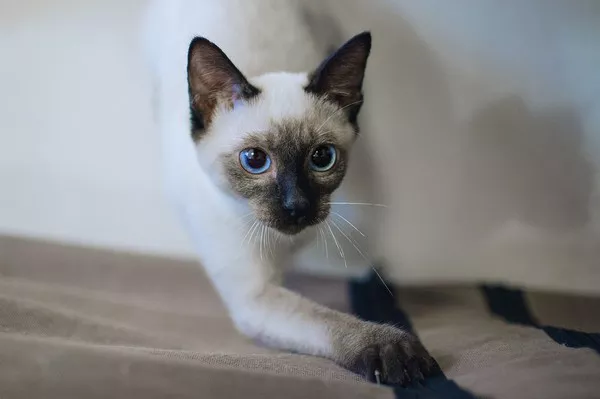Cats, renowned for their independent and enigmatic nature, are not typically associated with obedience training as dogs are. However, the idea that cats cannot be trained is a misconception. While it’s true that training a cat requires a different approach than training a dog, many cat breeds exhibit intelligence, curiosity, and a willingness to learn. In this in-depth exploration, we uncover the world of trainable cats, delving into breeds that are known for their ease of training and the techniques that can turn your feline companion into a well-behaved and responsive pet.
Feline Intelligence and Trainability
1. The Myth of Untrainable Cats:
Cats possess unique qualities that differ from dogs, leading to the misconception that they are untrainable. Understanding feline behavior, communication, and motivations is crucial for successful training.
2. Individual Variability:
Each cat is an individual with its own personality and preferences. While breed tendencies can influence trainability, there is significant variability among individual cats within a breed.
3. Positive Reinforcement:
Cats respond well to positive reinforcement, which involves rewarding desired behaviors. This approach encourages cats to associate training with positive experiences, making them more likely to cooperate.
Breeds Prone to Training
1. Siamese Cats:
Siamese cats are renowned for their vocal nature, intelligence, and social tendencies. Their curiosity and love for human interaction make them receptive to training, especially when positive reinforcement is employed.
2. Abyssinians:
Abyssinians are highly active and intelligent cats. They enjoy engaging with their owners and can learn tricks and commands with patience and consistency.
3. Bengal Cats:
Bengal cats are known for their playful and energetic nature. Their love for interactive play can be harnessed for training, and they often respond well to clicker training methods.
4. Maine Coons:
Maine Coons, characterized by their gentle disposition and sociable nature, can be trained to perform tricks and follow commands. Their intelligence and eagerness to please make them amenable to training sessions.
5. Scottish Folds:
Scottish Folds, with their distinctive folded ears, are known for their calm and adaptable demeanor. Their laid-back nature can make training sessions more manageable.
6. Ragdolls:
Ragdolls are known for their docile and affectionate temperament. While they may not be as active as some other breeds, their cooperative nature can make them responsive to training.
7. Sphynx Cats:
Sphynx cats, known for their lack of fur, are curious and enjoy human interaction. Their intelligence and social nature can make them receptive to training, especially when coupled with positive reinforcement.
Training Techniques for Cats
1. Clicker Training:
Clicker training involves using a clicker to signal desired behavior, followed by a reward. Cats quickly associate the click sound with a positive outcome, facilitating learning.
2. Treat-Based Training:
Positive reinforcement through treats is a powerful motivator for many cats. Using high-value treats during training sessions can encourage cooperation.
3. Patience and Consistency:
Cats respond well to routine and consistency. Patience is key, as training may take time. Short, frequent sessions are often more effective than lengthy ones.
4. Environmental Enrichment:
Providing a stimulating environment with interactive toys and climbing structures can contribute to a cat’s mental and physical well-being, making them more receptive to training.
5. Understanding Body Language:
Cats communicate through body language. Understanding their cues and respecting their boundaries during training builds trust and enhances the training experience.
6. Leash Training:
Some breeds, like Bengals or Abyssinians, may enjoy leash training. This allows them to explore the outdoors safely while providing an opportunity for training and bonding.
Factors Influencing Trainability
1. Early Socialization:
Cats exposed to positive experiences and socialization during kittenhood are often more adaptable and receptive to training.
2. Treat Preferences:
Knowing your cat’s favorite treats allows you to use high-value rewards during training, increasing motivation.
3. Individual Personality:
Understanding your cat’s individual personality, preferences, and dislikes enables you to tailor training methods to suit their needs.
4. Positive Association:
Creating a positive association with training by incorporating play, treats, and affection ensures that your cat views training sessions as enjoyable.
Conclusion
While cats may not conform to traditional notions of obedience, many breeds exhibit a high level of intelligence and can be trained to respond to commands and cues. Understanding the individual characteristics of your cat and employing positive reinforcement techniques can transform training sessions into enjoyable and enriching experiences for both you and your feline friend. Whether you have a Siamese, Abyssinian, Bengal, or another breed, embracing their natural instincts and preferences is key to fostering a well-behaved and content cat. With patience, consistency, and a deep understanding of feline behavior, you can nurture a strong bond with your trainable cat, creating a harmonious and fulfilling companionship.

























